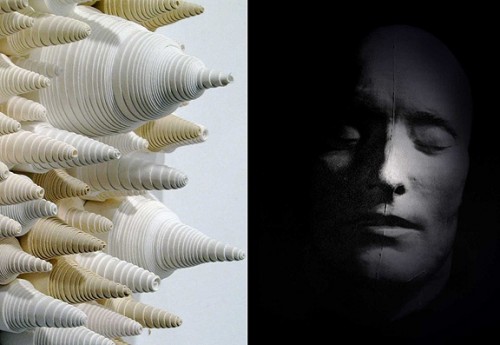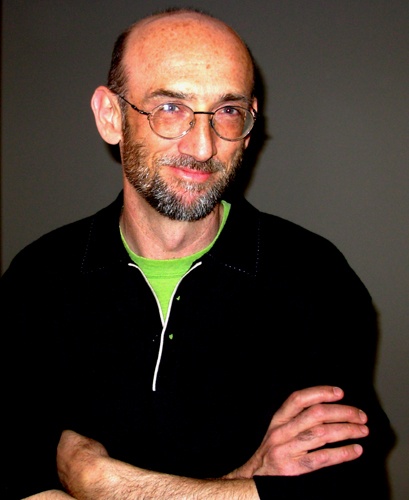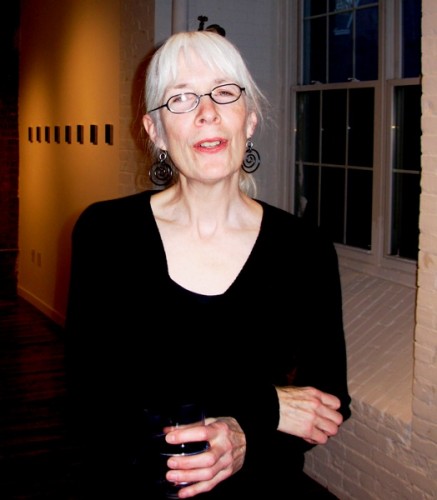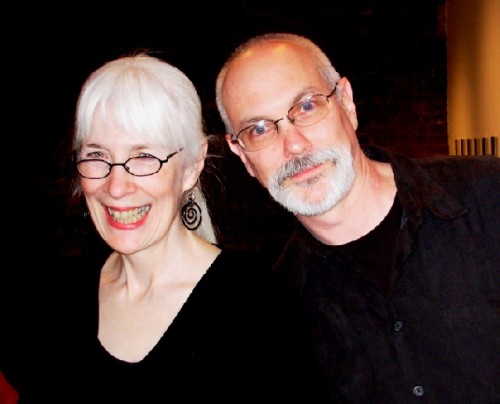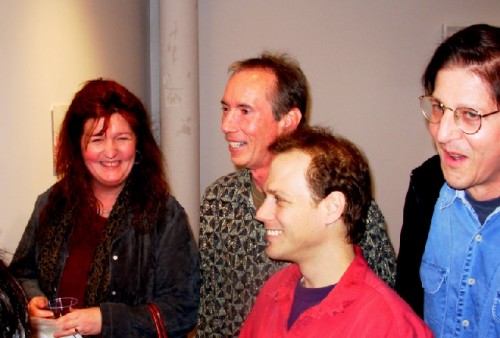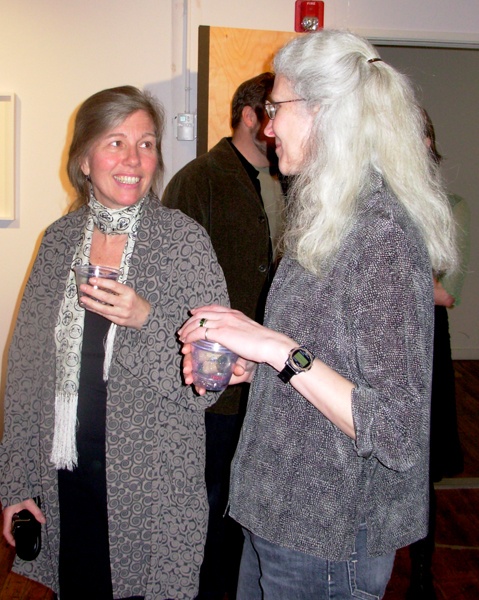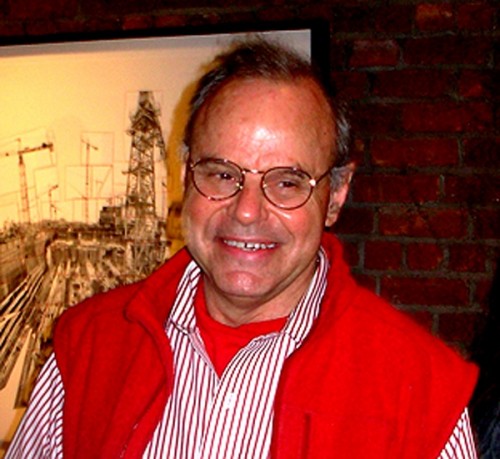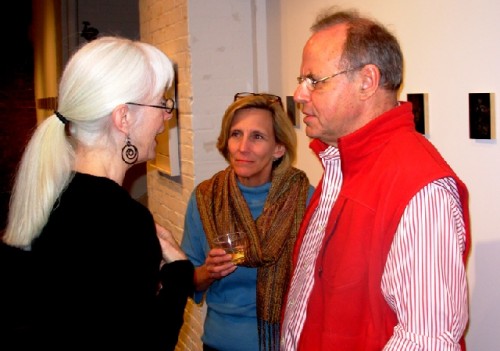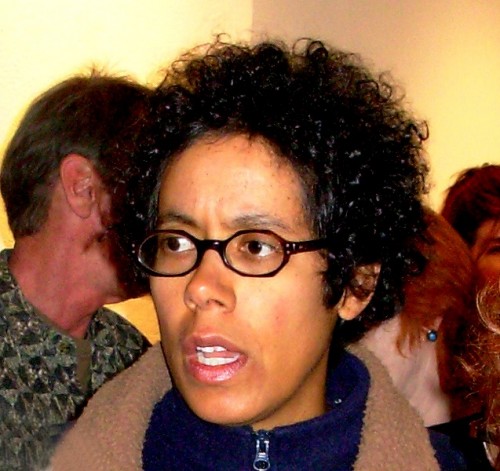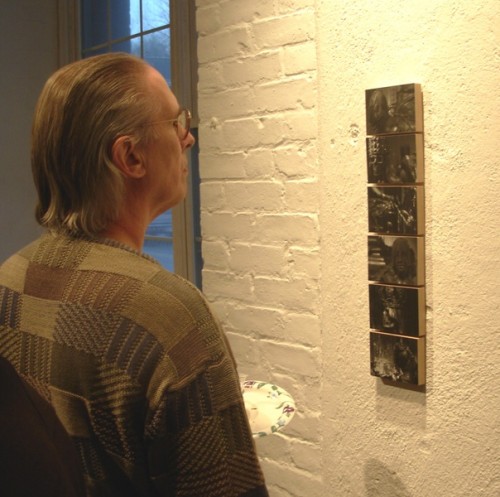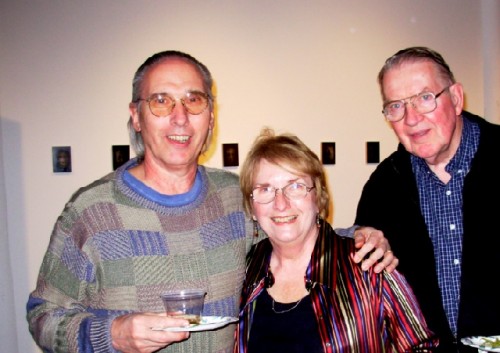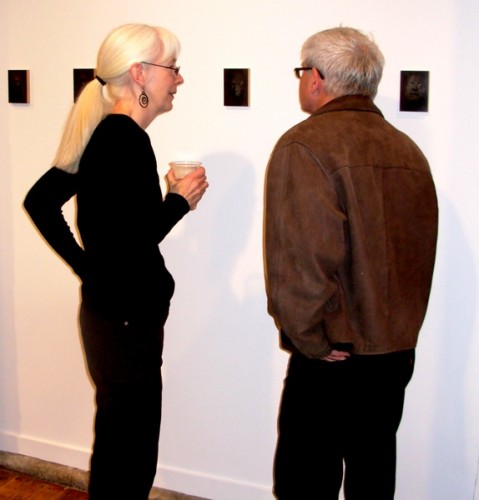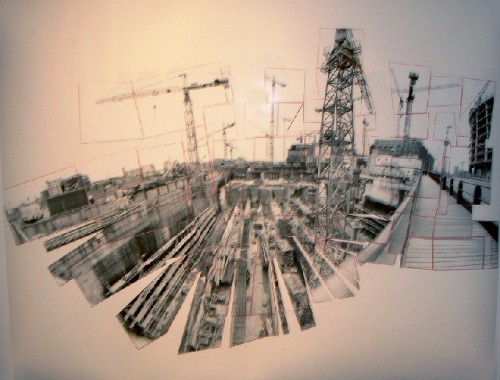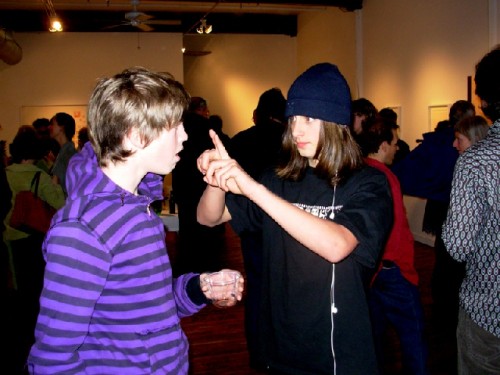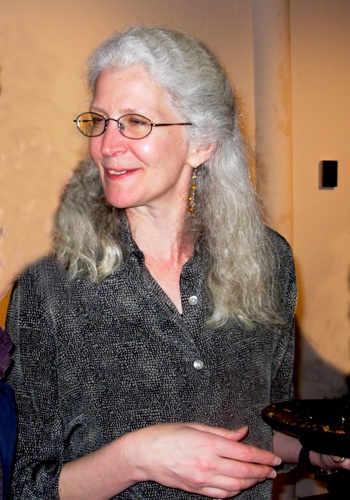Frank Jackson and Linda Schwalen Open Season at Eclipse Gallery
Chatting with Michael Conforti of the Clark
By: Charles Giuliano - Apr 01, 2007
After a dead of winter hiatus the Eclipse Mill Gallery has opened the season with a two person exhibition of works on paper by Frank Jackson and black and white mounted photographs by Linda Schwalen. The exhibition has been curated by Eclipse resident and photographer, Barry Goldstein. The artists live in Williamstown where he is an Assistant Professor of Art at Williams College. She showed her work in a 2003 solo at the Williams College Museum of art but has no formal relationship with the college.
During the opening we asked Barry about the concept behind this exhibition "Small Work." He was hesitant to elaborate beyond stating that "I thought the works would look good together." Adding that he and his wife, author Andrea Barrett, had know the artists for the past couple of years since they located to the area from Rochester when she took a position teaching creative writing. Goldstein has also taught courses on photography at Williams.
Having Goldstein curate shows of area artists, this is his second such project, greatly expands the scope of the artist run gallery which occupies the common space of the 40 unit artist/ studio loft building in North Adams. The program which is managed by gallery director, Diane Sullivan, provides a balance between exhibitions focused on Mill resident artists in solo and group shows, as well as exhibitions that represent community outreach. The success of this strategy was richly evident in the well attended and lively season opener which clearly brought in new visitors primarily drawing on friends of the artists from Williamstown. It is ventures such as this that go a long way toward bridging the town and gown gap that traditionally exists between working class North Adams and upscale, academic Williamstown. Similarly it is exciting to report that Eclipse resident Lisa Nilsson is currently participating in an exhibition at Mass MoCA. It is one of the few times that a 'local' artist has been shown in that world class contemporary museum. Again these are all steps in the right direction.
Significantly, Michael Conforti, director of the Clark Art Institute in Williamstown, attended the Eclipse opening. He was there to see the work of Schwalen who is a friend. Still it was a pleasure to see him out and about socially in North Adams. It seemed to be a a novelty for him as well.
Looking around at the lively crowd Conforti asked me if this was a typical turnout for Eclipse events? He explained that he doesn't often get to attend Berkshire events because he spends so much time on the road fundraising for the museum particularly now that it is in the midst of the major Tadeo Ando expansion. During a lively and somewhat playful and feisty exchange he suggested taking a look at the building in progress.
Some time back during an interview Conforti discussed how museums will have to educate audiences about modern and contemporary art particularly to keep up with younger demographics of visitors. But he doesn't appear to take his own advice as the museum continues to focus on Old Masters. Which they do superbly by the way. Such as the current Claude show which was enthusiastically covered for this website by Michael Miller. But I yawned when Conforti brought up the Monet show planned for this summer. The Museum of Fine Arts Boston mounted two rather recent Monet shows curated by Paul Tucker. So I have more or less had my fill of Monet. But Conforti assured me that when the current show opened in London it got 25 rave reviews out of 26 including one by "a curmudgeon like yourself who loved the show." Well, we shall see.
He also asked if I like the British artist, John Constable? Apparently the museum is about to announce a major acquisition. I replied "Without Constable there would not have been French Impressionism." He lit up and said "Can I quote you?" But of course. We also discussed last summer's spectacular "Clark Brothers Collect" which is about to open at the Met. A new biography on the complex and fascinating family is about to be published. "Stephen had the better taste and eye." I said. To which he frowned. "Not better different" he said. "Yes," I added, "but does that Clark own anything on the level with Stephen's great "Café at Night" by van Gogh (which he gave to Yale) or Cezanne's "The Card Players" which he gave to the Met?" "I would love to have those pictures," Conforti said and asked "But what about the Renaissance?" "Oh yes," said I. "You mean the Piero della Francesca of course." A great rarity.
Conforti playfully suggested that we may see significant changes when the new Clark emerges from expansion by 2010. There are plans to show select examples of modern and contemporary art. Just as he had suggested several years ago but never until now initiated. "We think edgy but don't act that way," he said. I asked if the museum had a mandate for its traditional programming. "No," he said. "That was my idea." Is there anything in the will of the Clarks, like that of Isabella Stewart Gardner, that prevents showing contemporary art? Not really, appears to be the answer and the conservative program of the Clark reflects more of a business and marketing strategy than an aesthetic one. Perhaps he feels that the audience is now ready to introduce gradual changes. That would certainly be interesting. He has long maintained that the Clark seeks a balance in a small geographic area blessed with the diversity of the Williams College Museum of Art and the radical programming of Mass MoCA. Which currently is bogged down in controversy. There is a nice and subtle synergy between the institutions and clearly they work together and are supportive of common goals of expanding and educating audiences.
This led to a bit of fast round robin of currently expanding museum projects such as the new ICA, which he has not seen, and the Norman Foster plans for the MFA which "may be too big." I expressed that I find the new ICA too trendy like the ubiquitous Frank Gehry buildings. More than likely they will pass from fashion but Conforti feels that Gehry will endure as the Gaudi of our time. This led him to ask what I think of the Clark. He rather baited me "This is your chance. Come onÂ…" To which my only comment is that "The Clark is the jewel in the crown of American museumsÂ…It is not a coincidence that Astrid and I have settled within walking distance of three great museums, including the Clark, its programming and research facilities." And the Ando design, while classic and conservative compared to zingy projects current and projected clearly will endure in its understated manner
There was a bit of comedy about the fact that his ancestors are from Tuscany while mine are from Sicily. This appears to explain why we haven't 'bonded' until now although clearly we enjoy these witty and exuberant exchanges. I asked if he had seen Berkshire Fine Arts. His answer was "No, I don't have time to keep up but I have people that read things for me."
It was time to get back to the opening so we drifted apart. This was hardly the occasion to look at the art. That happened the next morning as Barry was sitting when I visited the gallery which has recently been refreshed and repainted. Fortunately some of the dirty brick has been cleaned and painted white. Some Eclipse residents found the dirty brick charming. During the opening Norm Thomas articulated to me that he hated that trend and how much better it now looks. Although there is still a red brick wall which a lingering group of owners find charming and romantic. Apparently they have never spent five minutes hanging a show on a brick wall. A thankless task at best.
I took another try at getting an overview from Goldstein regarding the show and its intention. The response was that he would give it some thought and get back to me. This evening I got the following e mailed statement. Discussing Jackson's work it says "The work is concerned with color that holds paradoxical meaning, and form that speaks to the organic, architectural, and topographical, while at the same time maintaining the speculative possibility of the abstract. Of late, this has involved building hybrids of painting and sculpture, specifically, small sculptural forms out of paper that become "sites" for the act of painting. These pieces in the past have been single forms, but the work has begun to lead towards larger, accumulated images made up of many forms. The pieces require time-consuming and extreme processes, which parallel his interest in excess, the decorative, the well-crafted, and in creating forms that are beautifully insistent--even if that measure is defined by a slightly inappropriate place in the world."
Goldstein writes that "Jackson and Schwalen's work represent the dialectic between color and its antithesis- the absence of color. The depth and density of Schwalen's death mask series; the playful constructions of Jackson's "sculptural drawings" together create a synthesis of form, texture and content that is a pleasure for the eye and mind."

